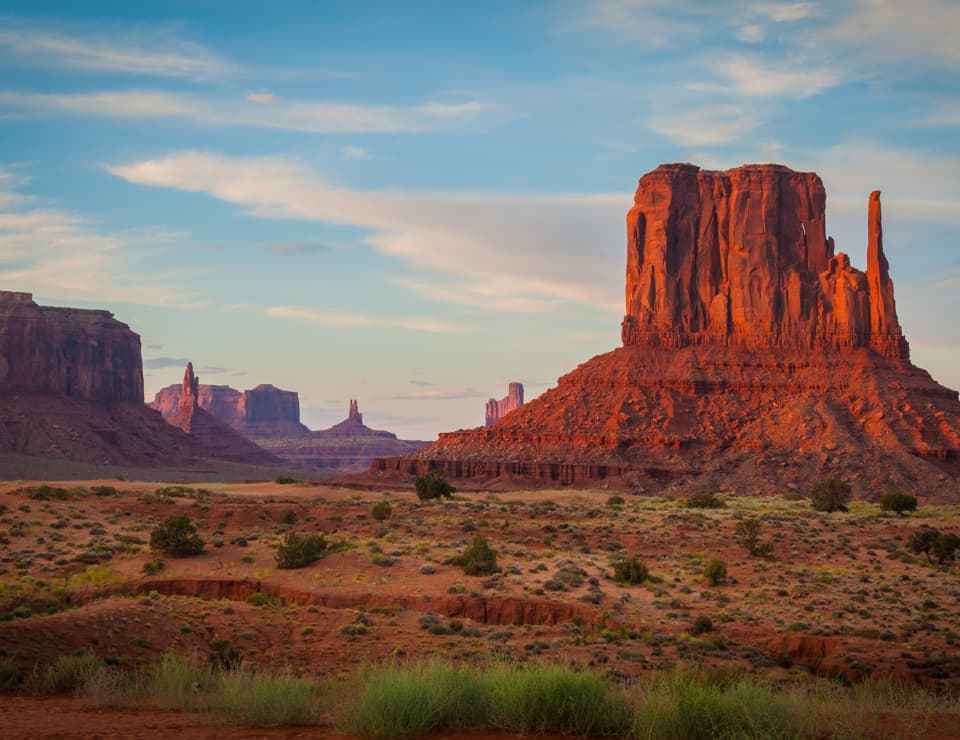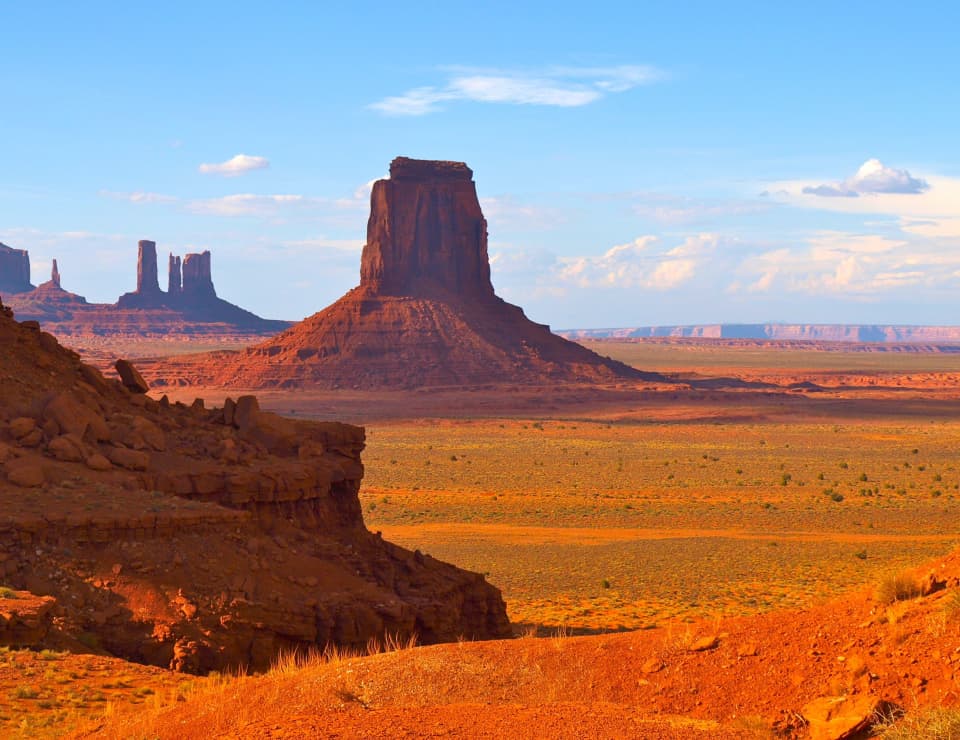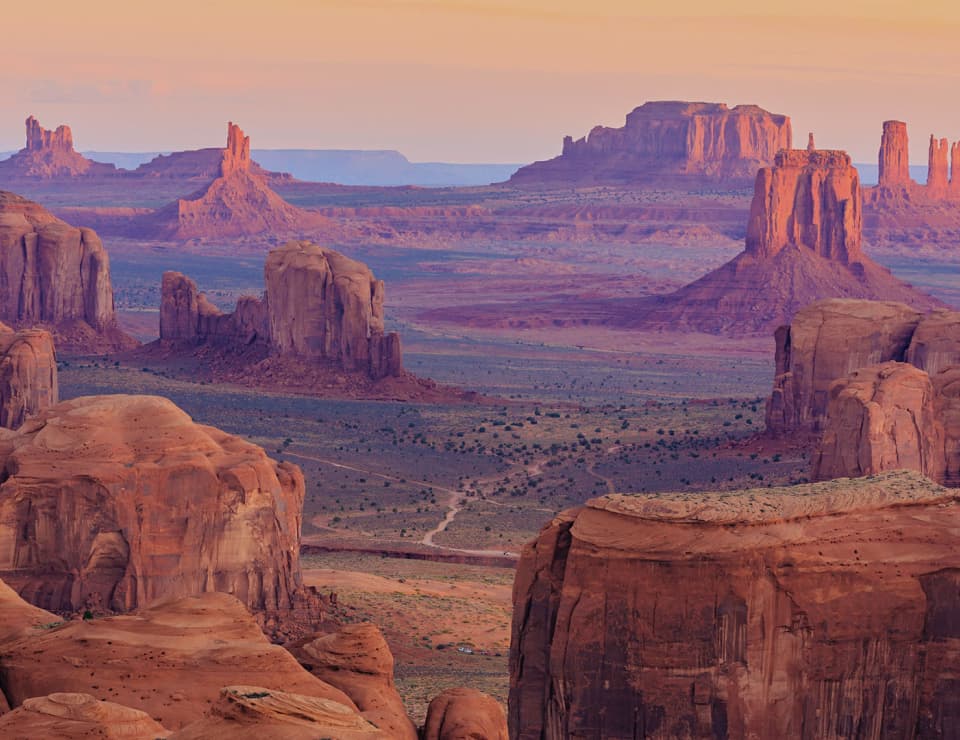Book Mobile Pet Grooming Las Vegas, NV Monument Valley

Praise from our satisfied customers:

History
Monument Valley became famous in the 20th century thanks to Hollywood movies that featured its stunning landscapes. The most notable films shot here include Stagecoach, The Searchers, and Forrest Gump. Today, Monument Valley attracts millions of visitors every year who want to admire its natural beauty and learn about its cultural significance.
Monument Valley with Pets
Pets are allowed on

The scenic drive: You can drive your own vehicle or join a guided tour along a 17-mile loop road that takes you to some of the most spectacular viewpoints in Monument Valley. You can bring your pet along in your car, but you must always keep them inside. You cannot let them out of the car or walk them along the road or near the monuments. This is for their own protection, as wild animals, such as coyotes, snakes, scorpions, and spiders, could harm them. It is also to respect the sacredness of the land and the privacy of the Navajo residents who live in the area.
The visitor center: You can take your pet inside the visitor center, where you can find information, souvenirs, restrooms, and a restaurant. However, you must always keep them on a leash and under your control. You must also clean up after them if they make a mess.
The campground: You can camp overnight in Monument Valley with your pet at The View Campground, which offers tent and RV sites with hookups. You can also rent a traditional Navajo hogan (a circular wooden hut) to accommodate up to six people and one pet. You must always keep your pet on a leash and under your control. You must also clean up after them and dispose of their waste correctly.
Pets are not allowed on
The hiking trails: Two hiking trails in Monument Valley allow you to explore the area on foot: The Wildcat Trail and The Mitten View Trail. However, pets are prohibited on either of these trails, as they could disturb the wildlife, damage the vegetation, or get lost or injured. If you want to hike in Monument Valley with your pet, you must look for other options outside the park boundaries.
The horseback rides: One of the best ways to experience Monument Valley is on horseback, as you can ride along the same paths the Navajo ancestors used for centuries. You can join a guided horseback tour that will take you to some of the most scenic spots in the valley. However, pets are prohibited on these tours, as they could spook or harm the horses or interfere with the guides.
Some general tips
Make sure your pet is healthy and up-to-date on their vaccinations before traveling to Monument Valley.
Do not leave your pet unattended in your car or at your campsite.
Respect the Navajo culture and beliefs: Monument Valley is more than just a tourist attraction; it is also a home and a sacred place for the Navajo people. Please respect their customs and traditions, and do not disturb or damage any structures or artifacts. Also, do not take pictures of Navajo people or their homes without permission.
Keep your pet hydrated and cool: Monument Valley can get hot and dry in the summer (June to August), reaching over 100°F (38°C). Ensure your pet has plenty of water and shade, and avoid walking them.

Flora and Fauna
Taking Care of Your Dog

Taking Care of Your Cat
Interesting Facts
Monument Valley is not a valley but a plateau eroded by wind and water over millions of years
Monument Valley is part of the Colorado Plateau, which covers parts of four states: Arizona, Utah, Colorado, and New Mexico.
Monument Valley has been featured in many movies and TV shows, especially westerns. Some of the famous films that were shot there are Stagecoach (1939), The Searchers (1956), Easy Rider (1969), Forrest Gump (1994), and The Lone Ranger (2013).
Monument Valley is known for its starry nights, spectacular sunrises, and sunsets. You can enjoy these views from various viewpoints or campsites in the area.
Monument Valley is a sacred place for the Navajo people, who call it Tsé Biiʼ Ndzisgaii (meaning valley of the rocks). They have many legends and stories about the origins and meanings of the rock formations.